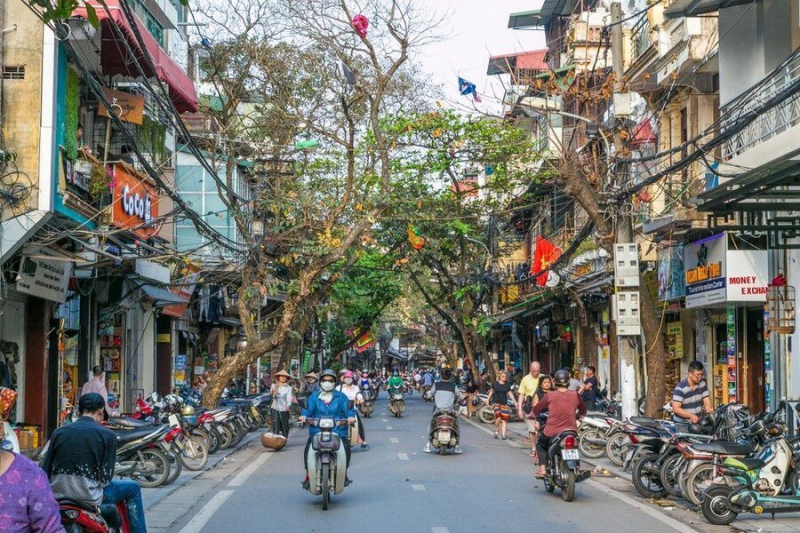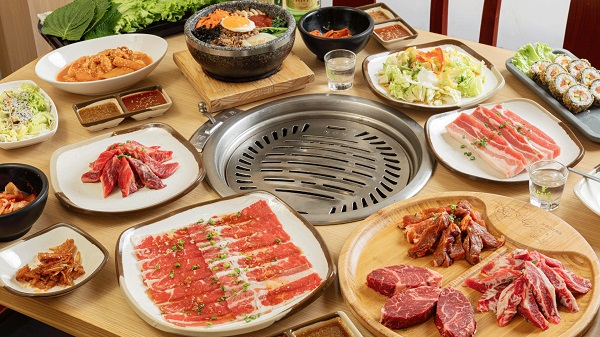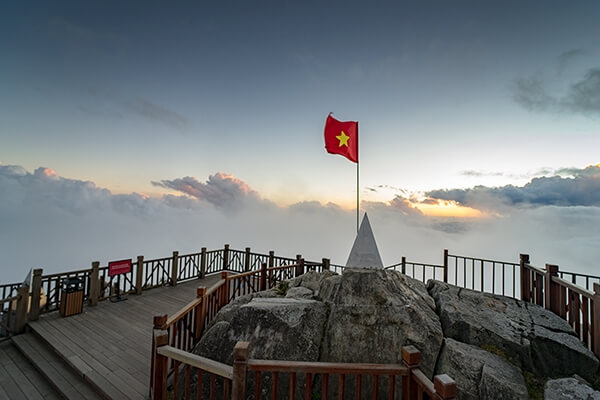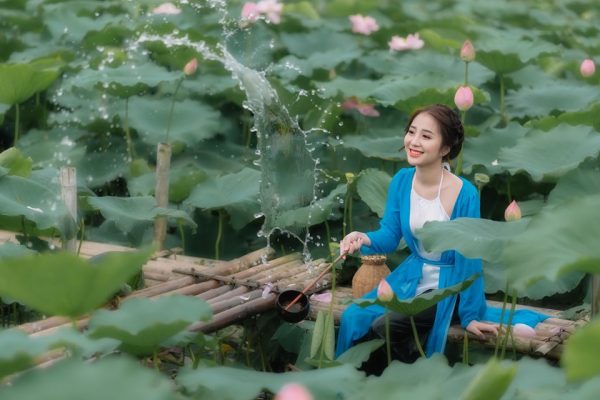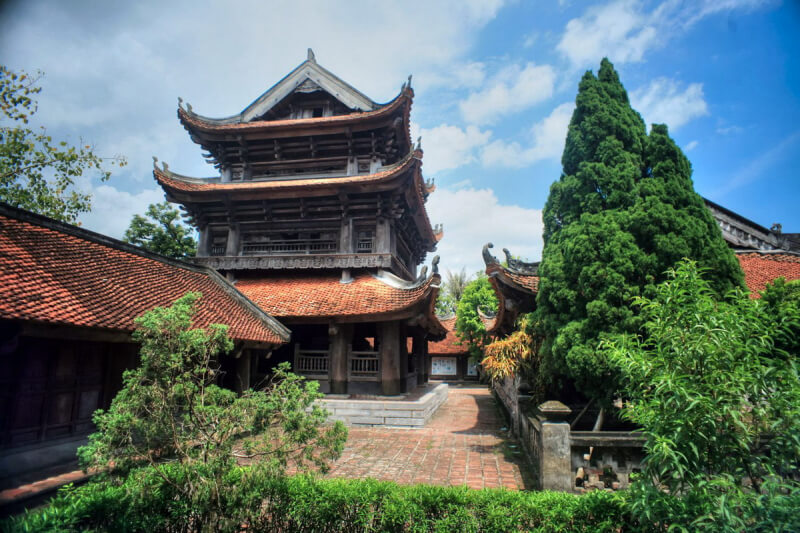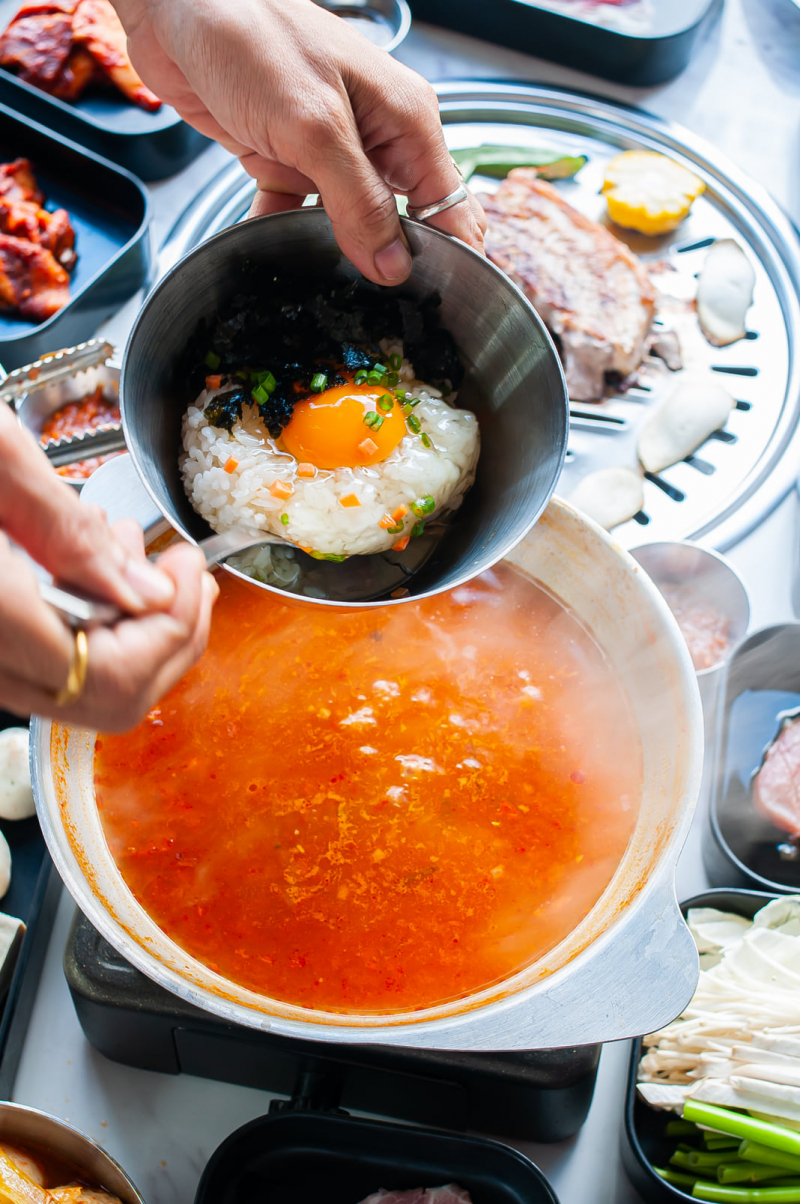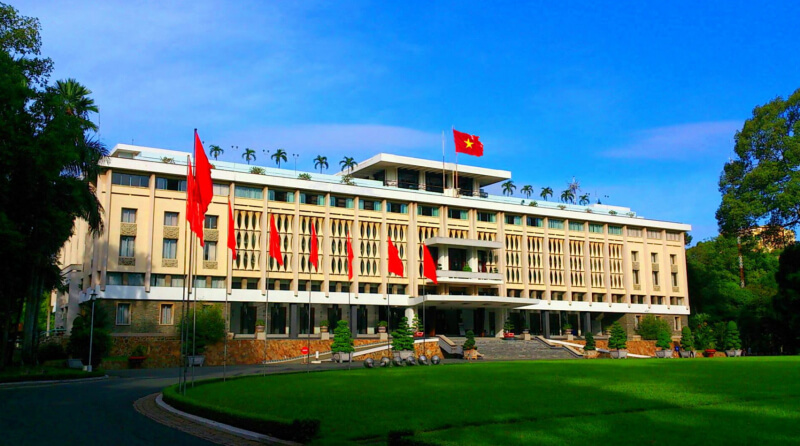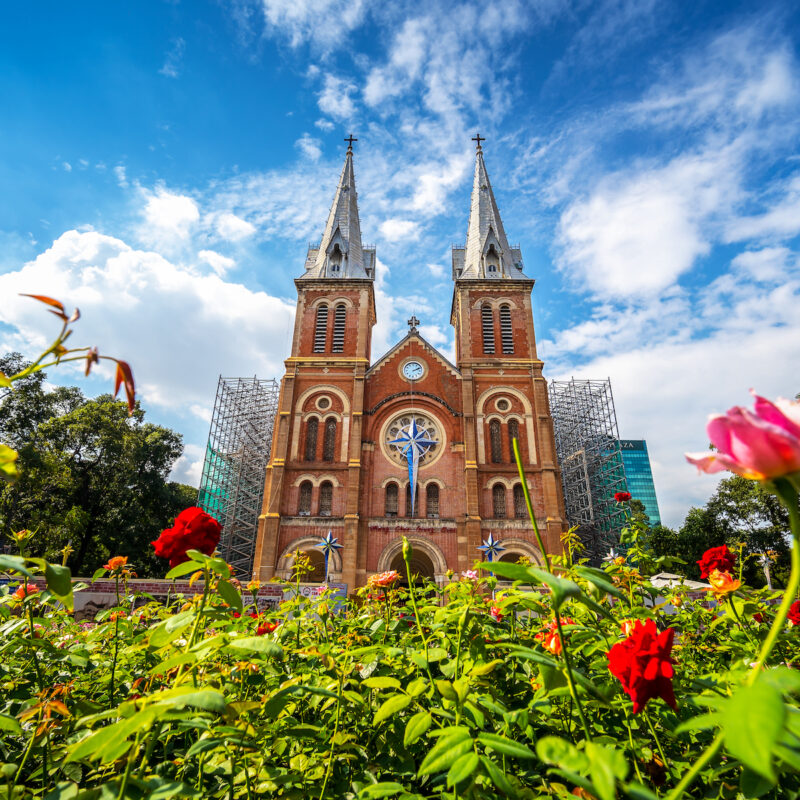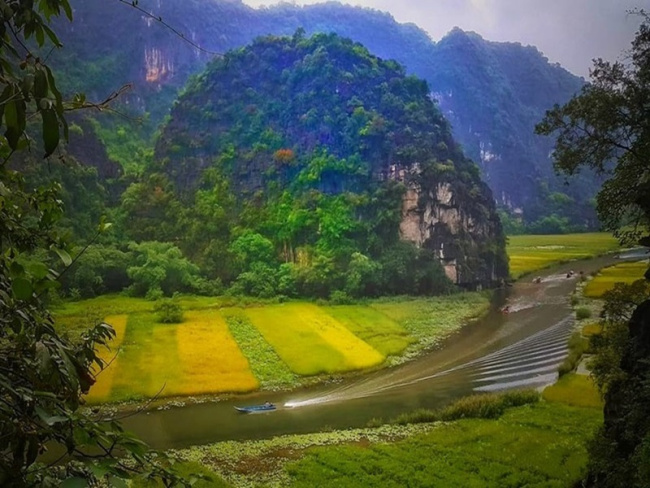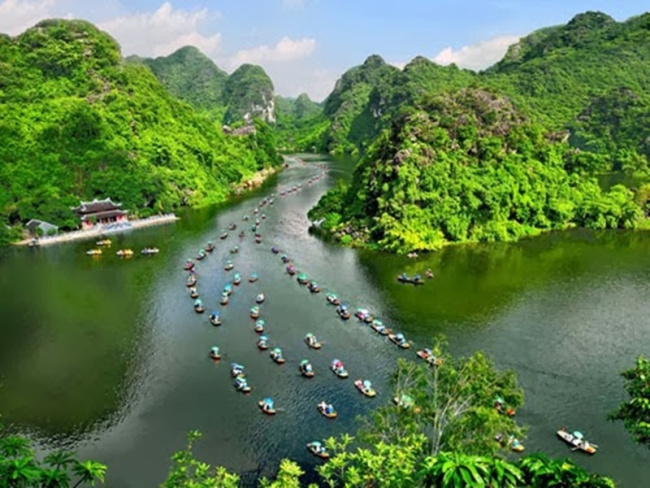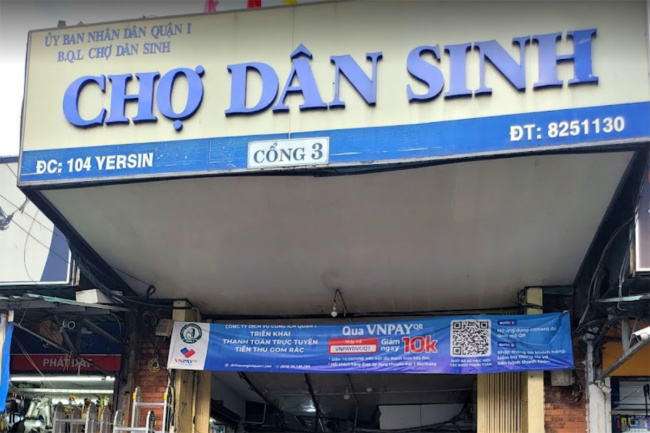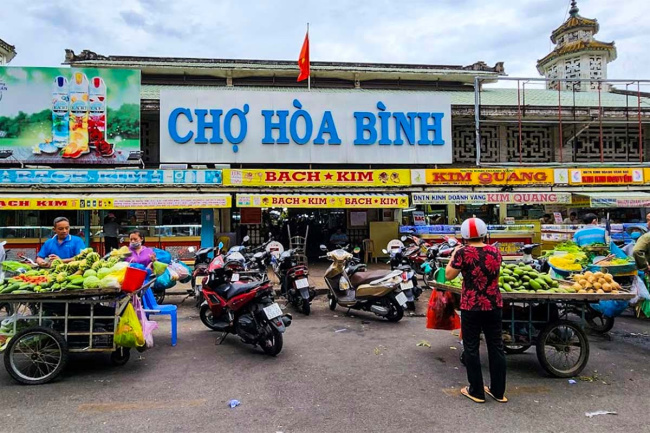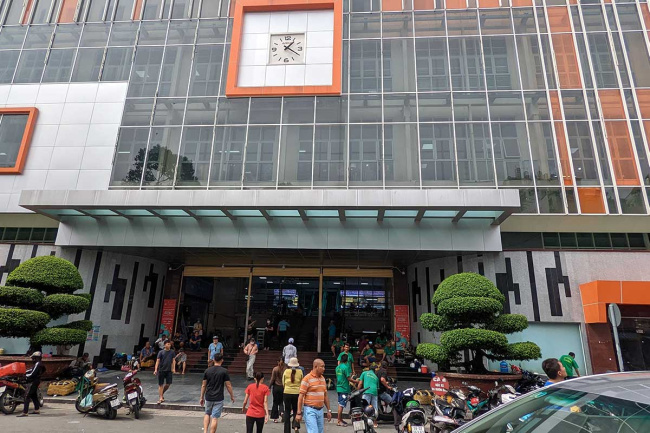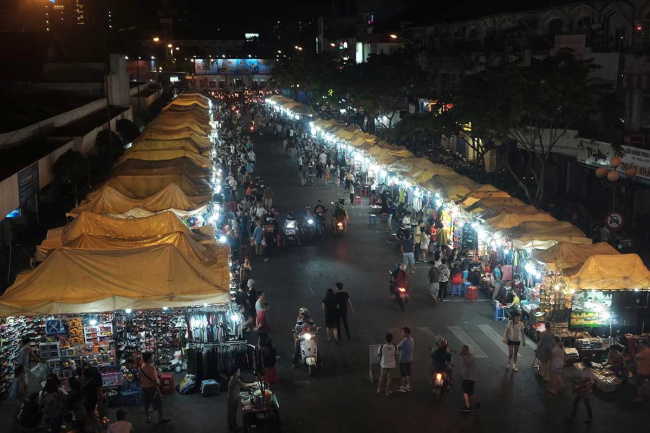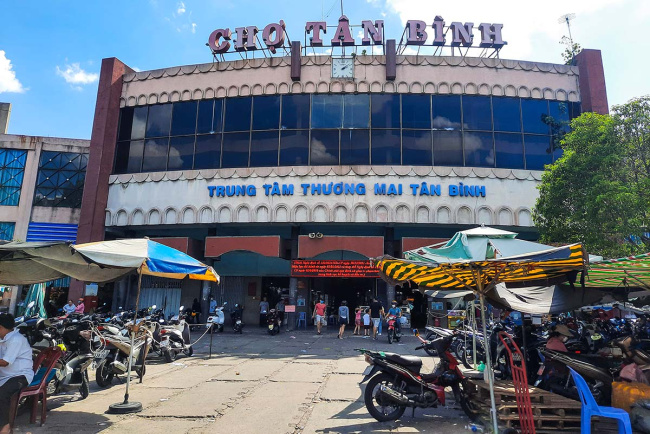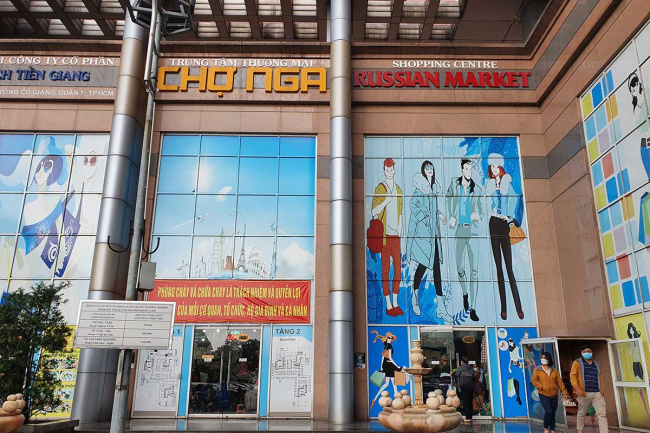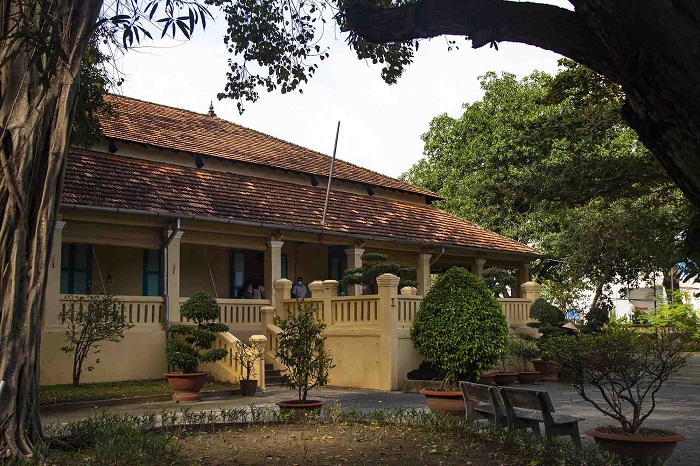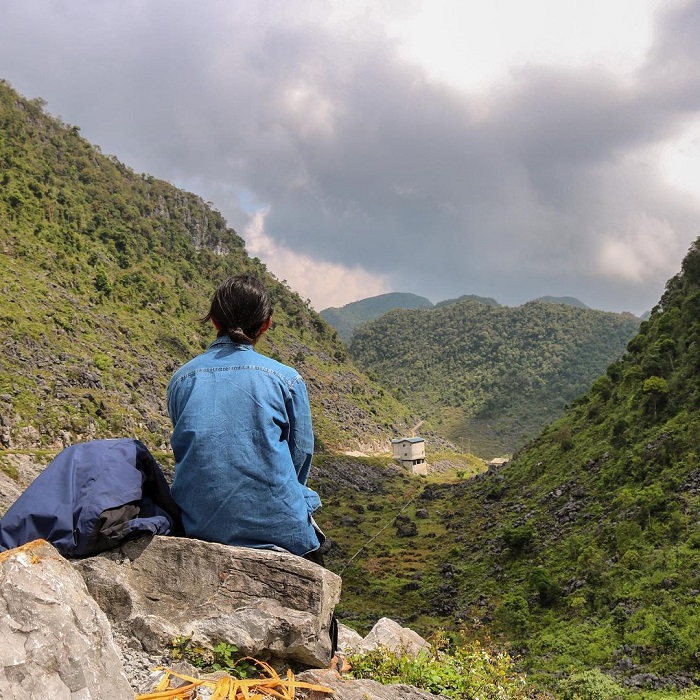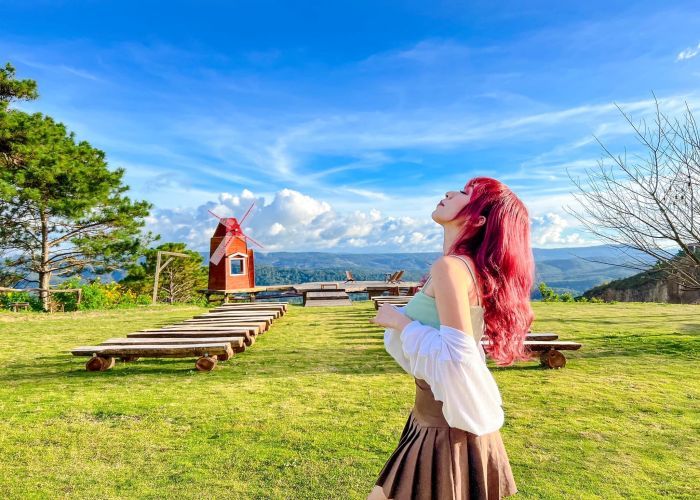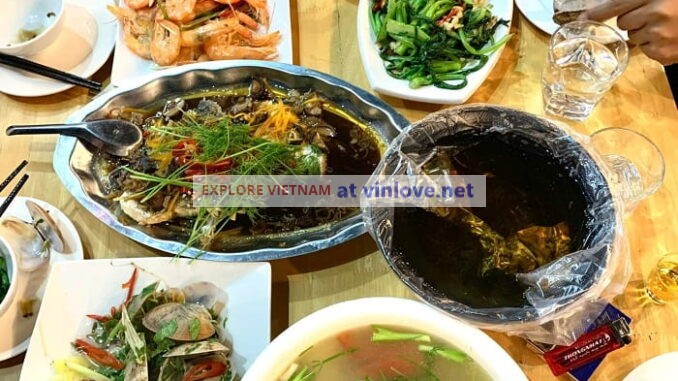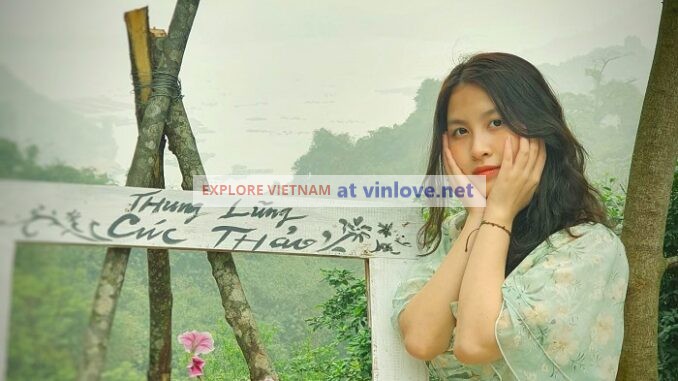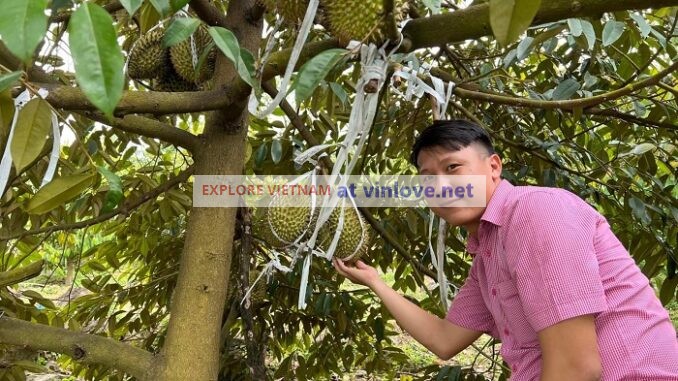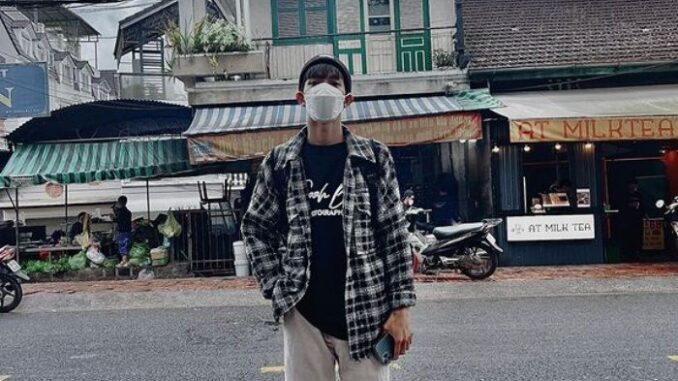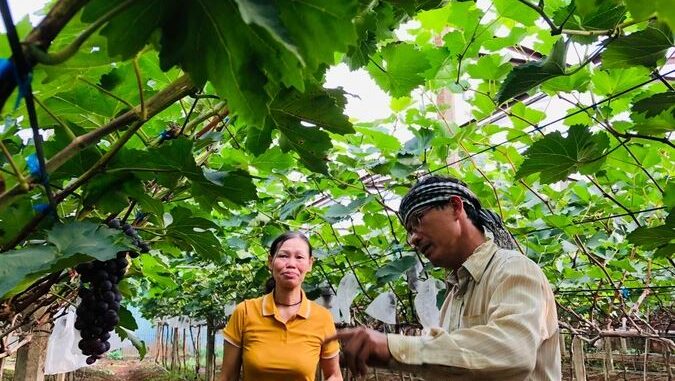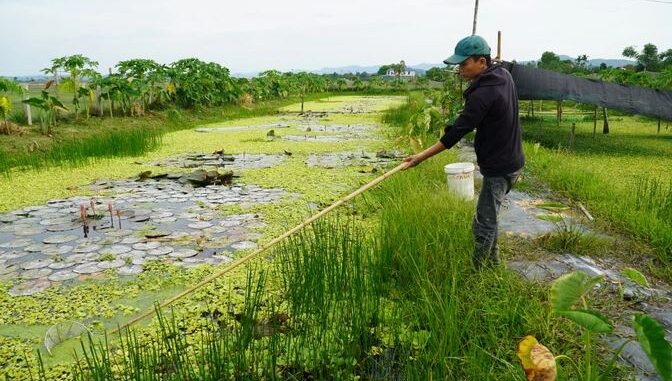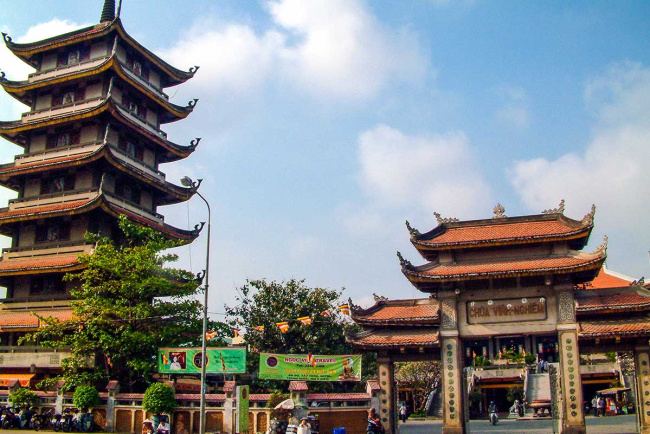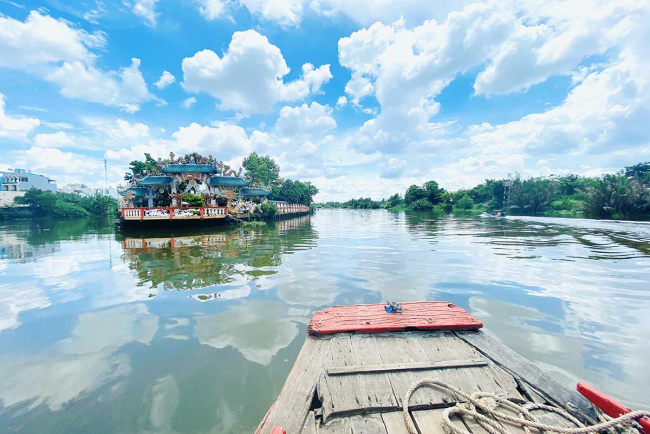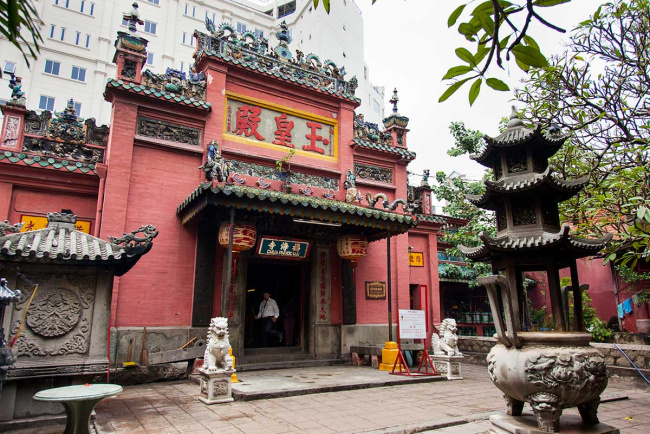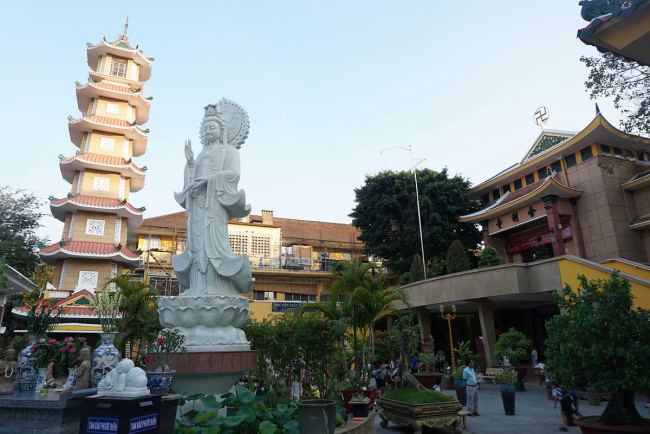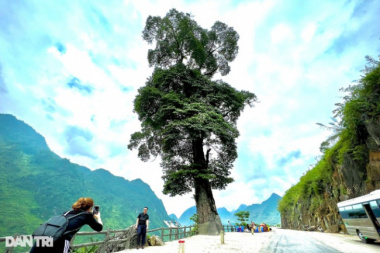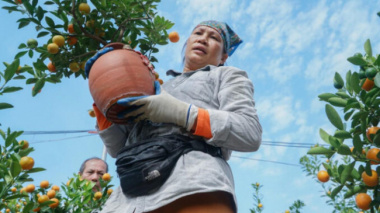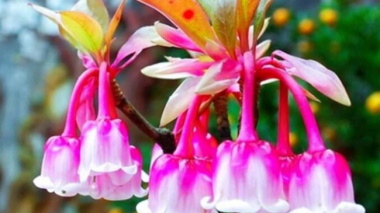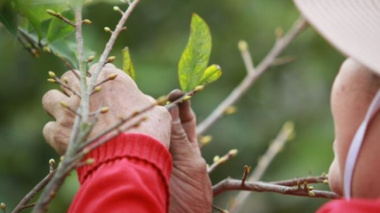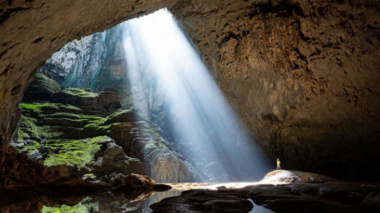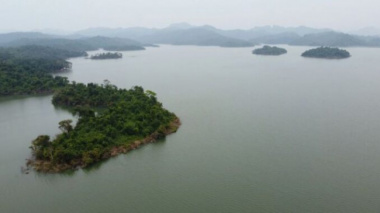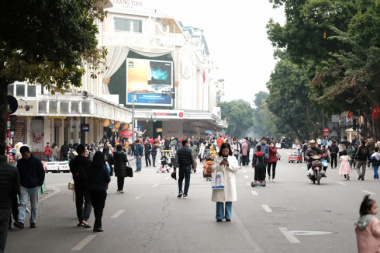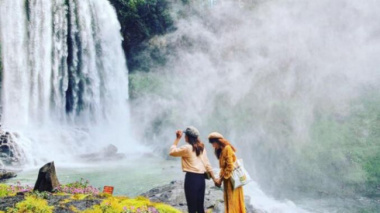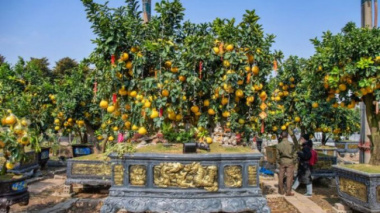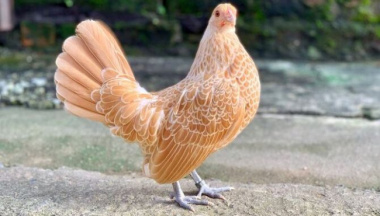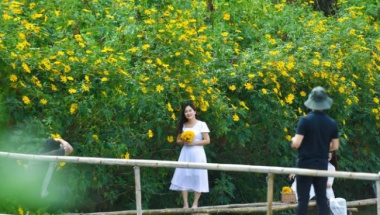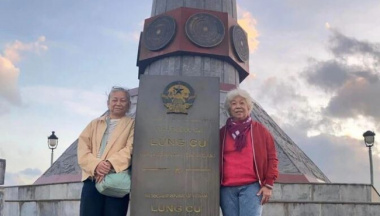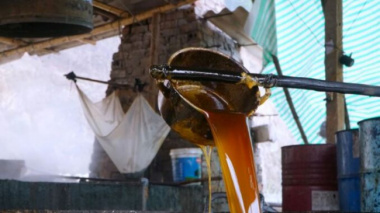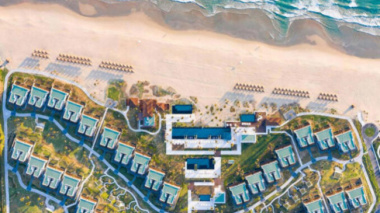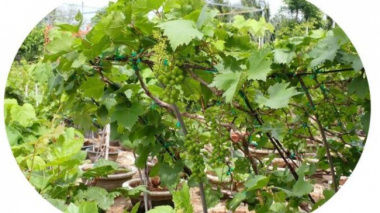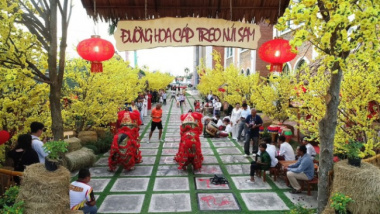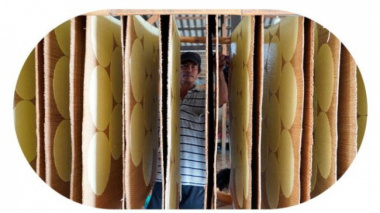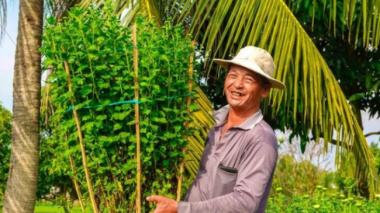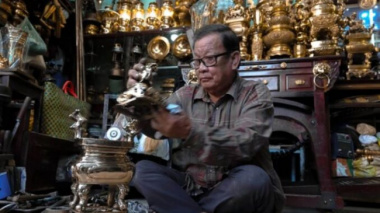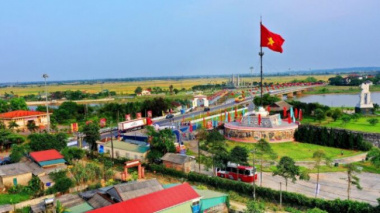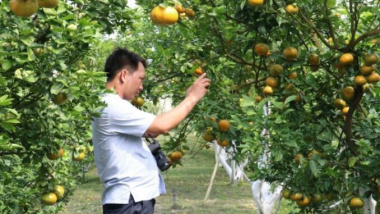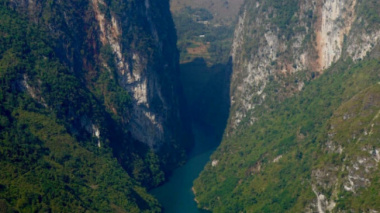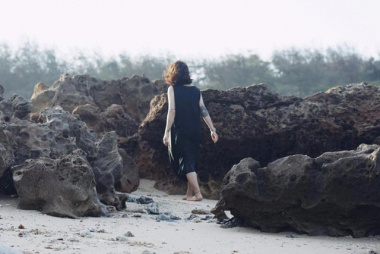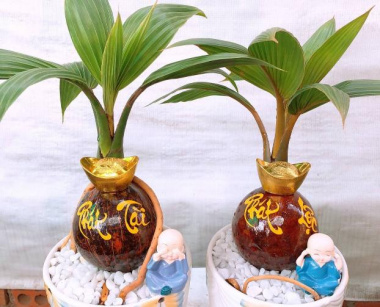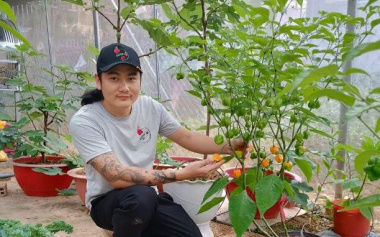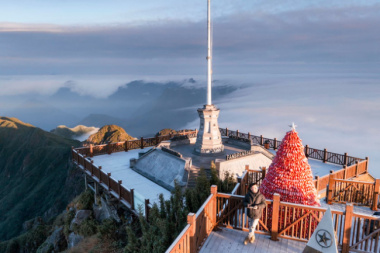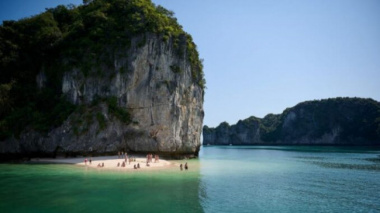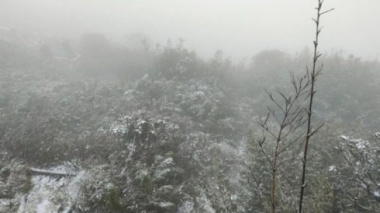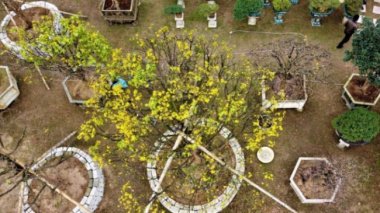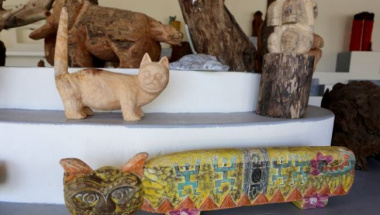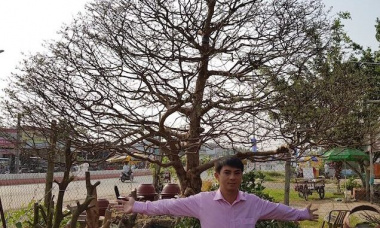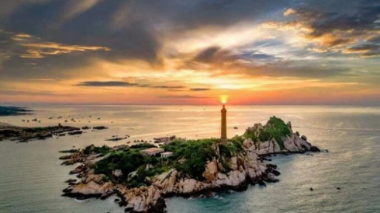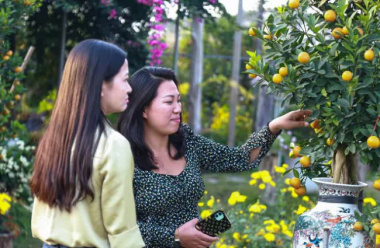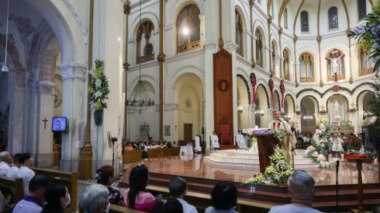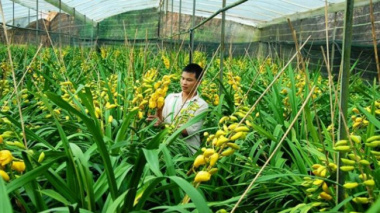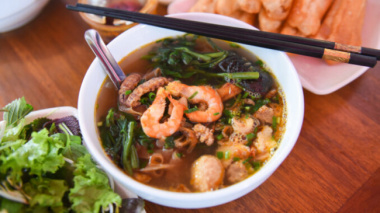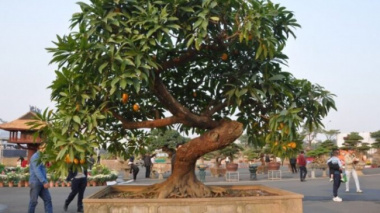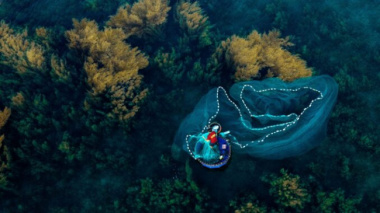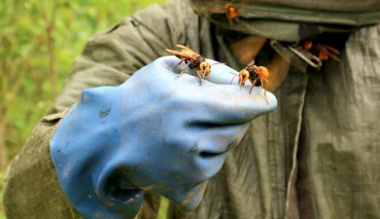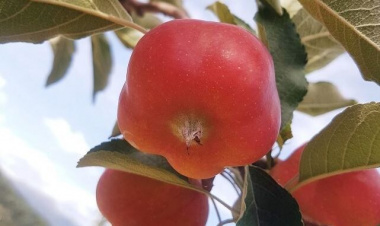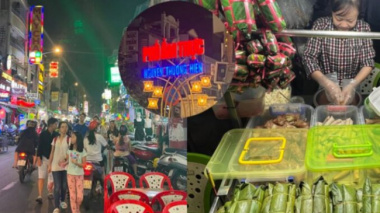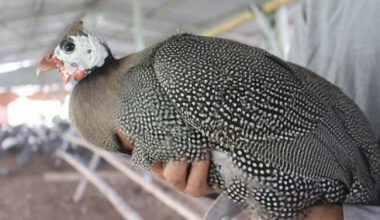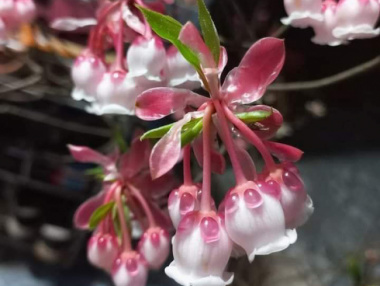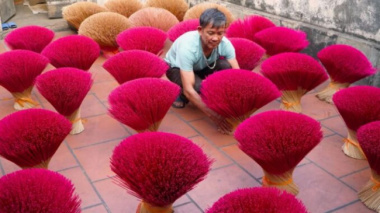Dak Nong Province, Vietnam
- How to Get to Dak Nong
- Capital City
- Famous Places in Dak Nong Province
- Dak Glong District
- Dak Song District
- Krong No District
- Main Attractions
- Ta Dung National Park
- Thac Dray Sap Waterfall
- Thac Lieng Nung Waterfall
- Nam Nung Nature Reserve
- Truc Lam Dao Nguyen Zen Monastery
- Special Events
- Activities near Dak Nong Province
- Latest in Dak Nong Province
- Trio of Waterfalls in the Central Highlands
- Ta Dung National Park – Dak Nong Province
Covering the southern half of the country’s Central Highlands Region and meeting the border with Cambodia, Dak Nong (Dắk/Dắc Nông) Province is an underrated and all too often overlooked destination. Tucked away in this southern province are historical sites, gentle mountains, large lakes, and two sizable rivers.
Locals rely on the production of coffee, rubber, and pepper, but with high tourist potential, the hospitality industry in Dak Nong is expected to grow immensely in the coming years.
How to Get to Dak Nong
Away from the coast, Dak Nong Province has an interesting landscape that shifts from vast grasslands to low-lying mountains. Carving their way through the terrain are various bodies of water. The abundance of freshwater systems including lakes, rivers, and waterfalls is essential to life and productivity in the province.
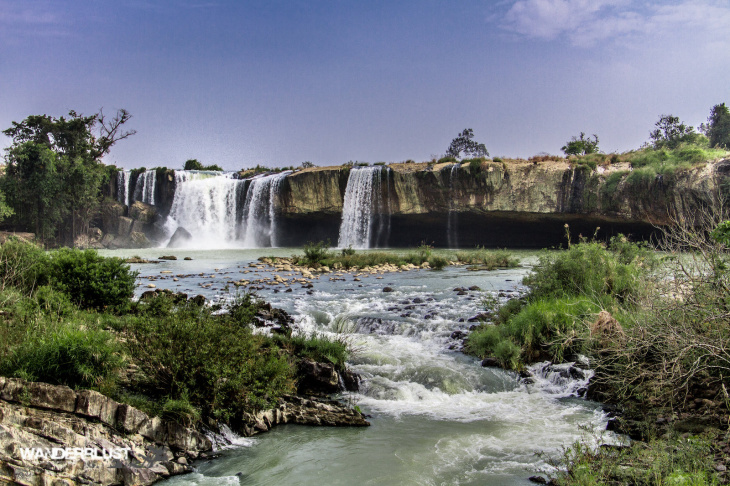
Thac Dray Sap Waterfall. Photo: Hugh Derr
Protecting some of Dak Nong’s most beautiful water and mountain landscapes for future generations is a UNESCO Global Geopark. Being located away from the coast and so close to the international border with Cambodia makes Dak Nong Province somewhat isolated from the rest of Vietnam.
There aren’t many tourist destinations near Gia Nghia (Gia Nghĩa), the provincial capital of Dak Nong. Ho Chi Minh City, famous in Southern Vietnam, is about 217 km (135 mi) to the south. Da Lat, one of the most well-known cities in the Central Highlands Region, is around 186 km (116 mi) away.
Due to the remote landscapes between the two, driving from Da Lat to Gia Nghia takes more than 4 hours as tourists must first head south, before turning to the north. Currently, the only way to get to Dak Nong Province is by driving, as the province lacks airports and train stations.
History
Dak Nong is considered a newer addition to Vietnam’s list of provinces. Originally part of the neighboring Dak Lak (Dắk Lắk) Province, which had been formed by combining Dak Lak and Quang Duc (Quảng Ðức) after the Vietnam War, in 2003, Dak Lak became too big leading to the creation of Dak Nong Province.

River flowing through the Dak Nong Province. Photo:
Centuries before Dak Nong Province was created, the area was ruled by the Kingdom of Champa. By 1540, the settlement of ethnic Vietnamese people allowed Vietnam to better control the Central Highlands Region. Ethnic culture has always been an important part of Dak Nong’s identity and many groups are still living in the area today.
Going back even further, to about 140 million years ago, the history of Dak Nong Province can be traced by its geologic features. Once covered by the ocean, archeologists have found many fossils and ammonites in Dak Nong. Left to develop for millions of years, human habitation of the land didn’t start until about 10,000 years ago.
Since then, evidence of human culture in Dak Nong Province and especially around the geopark has been found in the form of musical instruments and weapons.
Fun Facts
- There are an estimated 574,673 people living in Dak Nong Province as of 2018.
Capital City

Gia Nghia, capital city of the Dak Nong Province. Photo:
Recently upgraded to Class-3 City status, Gia Nghia feels more like a town than a bustling urban area. In fact, before 2020, the city used to be the country’s only town that acted as a provincial capital. Small growth in the area finally saw Gia Nghia graduate from being called a township to a city. However, growth is still limited in the area and travelers shouldn’t expect much when visiting.
Lacking tourist infrastructure and even attractions, Gia Nghia is a true off the beaten path destination. Truth be told, there aren’t many attractions in the city. Instead, this provincial capital is a place where tourists can experience the tranquility of Vietnam’s countryside. Spread out through the hills, Gia Nghia charms visitors with its laid-back vibe and uncrowded streets.
There’s plenty of open space for visitors to walk through and along the way, you may pass one of the city’s reservoirs, cemeteries, churches, or neighborhoods. Towards the end of the year, flowers begin to bloom; painting the city’s background with a palette of vibrant colors. As a compact capital, there aren’t many large-scale establishments in Gia Nghia where tourists can stay.
Rather, the hotels feel more local as they are frequently uncrowded. Modern hotels can be found in the Gia Nghia city proper, but just a short distance away, travelers may choose to stay overnight in a homestay instead. The best hotels in and around Gia Nghia are the Hoa Yen Hotel, Hotel Sai Gon Dak Nong, Ta Dung Topview Homestay, Doi Che Gia Nghia Homestay, and the MeGarden Daknong.
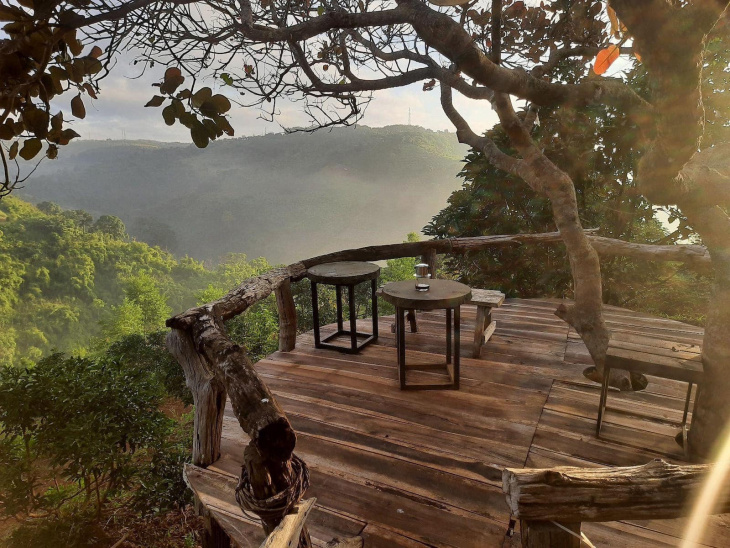
An overlook at MeGarden Daknong. Photo: MeGarden Daknong
Lacking big chains or imported menus, restaurants in Gia Nghia serve traditional Vietnamese meals. Ranging from noodles to hotpots, travelers can refuel by digging into some of the local favorites. Highly rated for their service and food, the best restaurants in Gia Nghia are the Banh Mi Chu Voi Con – GN, Nhu Ngoc Restaurant, Cua Hang Yen Sao Hoang Gia, Seoul BBQ, and the Nha Hang Lodge.
Famous Places in Dak Nong Province
As a remote province, most of Dak Nong Province’s famous places are uncrowded and dominated by wild landscapes. Outside of the provincial capital, the rural districts harbor amazing natural, cultural, and religious attractions. From epic waterfalls to ethnic villages and calm temples, visitors should check out Dak Glong (Ðăk Glong), Dak Song (Ðăk Song), and Krong No (Krông Nô) Districts.
Dak Glong District
Home to the province’s largest community of H’mong ethnic people, Dak Glong District is ideal for those looking to engage with local culture. Living in tight-knit communities, visitors are encouraged to book a homestay with a local family. More accessible than some of the districts, Dak Nong created a few tourism routes, one of which runs through the Dak Glong District.
Dak Song District

Overlooking Ta Dung Lake in the Dak Nong Province, Vietnam. Photo by: Bé Râu.
A hotspot for backpackers, Dak Song District is the head of tourism for Dak Nong Province. Visitors looking to escape the chaos and noise of urban areas can relax, knowing that they are miles away from the big cities. In Dak Song District, some of the best attractions include Ta Dung Lake, Luu Ly Waterfall, Nam Nung (Nâm Nung) Nature Reserve, and Dak Mol Mineral Spring.
Tourists visiting this district can participate in a plethora of activities like hiking, boating, and swimming.
Krong No District
Another district that is known for its natural highlights is Krong No. Boasting the famous Thac Dray Sap Waterfall, many tourists will head to this rural area to view the beauty of the multiple cascades. While the waterfall is the district’s biggest attraction, visitors should to head to Krong No Volcanic Geopark to tour a spectacular cave.
Main Attractions
Those that take the time to explore Dak Nong Province are rewarded with an impressive list of outdoor attractions to visit. With fewer urban areas and less infrastructure, the province is a hotspot for ecotourism. A few must-visit locations in Dak Nong are Ta Dung National Park, Thac Dray Sap Waterfall, Nam Nung Nature Reserve, and the Truc Lam Dao Nguyen Zen Monastery.
Ta Dung National Park
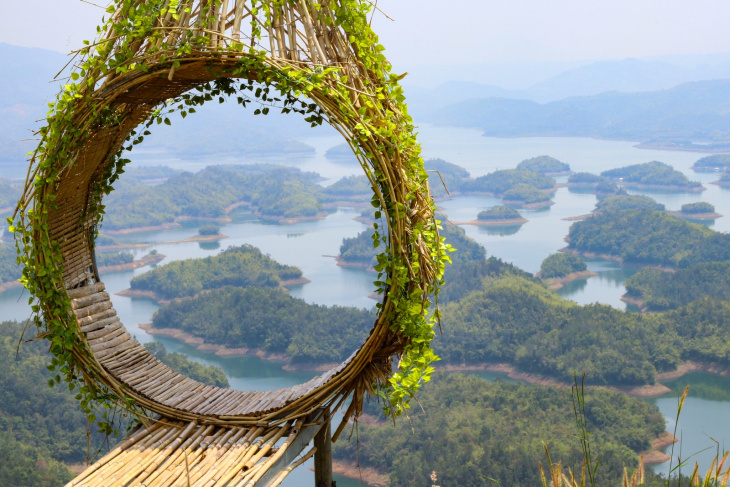
Looking over the islands of Ta Dung National Park in the Dak Nong Province, Vietnam. Photo by: Loek Zanders.
Nicknamed the “Ha Long Bay of South Central Vietnam”, Ta Dung (Tà Dùng) National Park boasts more than 40 islands in a lake/freshwater ecosystem. An important area for ecological preservation and research, this area is a hotspot for tourists and international scientists. A key feature of the national park is Ta Dung Lake, where guests can enjoy both aquatic and terrestrial activities.
Camping in the hills around the lake or onshore is a popular activity, as well as boating through the numerous islands. Being remote, visitors are encouraged to hire a local guide at the main service center. While guides are optional for daytime activities, tourists who plan to camp overnight in the area will need a guide to find the remote campsites.
Thac Dray Sap Waterfall
Also called the Misty Waterfall, Thac Dray Sap (Thác Ðray Sáp) is part of a larger freshwater system. Boasting three waterfalls, including Dray Nur and Gia Long, the cascades are a combination of two rivers flowing together. Falling from a rocky ledge, the Thac Dray Sap Waterfall falls within Dak Nong Province.
Visitors can hike the short trail to the falls and bathe in the pool beneath the cascades. Local guides are not necessary, but they can be helpful for tourists who want to check out the area around the falls too.
Thac Lieng Nung Waterfall
Tucked away in a verdant valley, Thac Lieng Nung Waterfall is just outside of Dak Nia Commune in Dak Nong Province. A single cascade drops from a rocky overhang into a pool before flowing into the stream. The greenery around the waterfall only adds to the beauty and its remote location means that few visitors will make the journey to view Thac Lieng Nung.
However, if there are changes in the Dak Ninh Stream, which feeds the waterfall, there will be less water flowing through the area. More recently, the waterfall has even run dry without rain, so tourists should plan to visit this attraction during the rainy season.
Nam Nung Nature Reserve
Protecting a broadleaf evergreen forest habitat, the Nam Nung Nature Reserve covers an area of more than 20,000 hectares. Cooler in the southern parts of the park and hot in the north, many visitors head to Nam Numg to view the Bear or Seven Floors Waterfalls. Both remote waterfalls, visitors will have to conquer a challenging hike to view these beautiful cascades.
Another feature in the nature reserve that is popular for hiking is the horn-shaped mountain, Nam Nung.
Truc Lam Dao Nguyen Zen Monastery
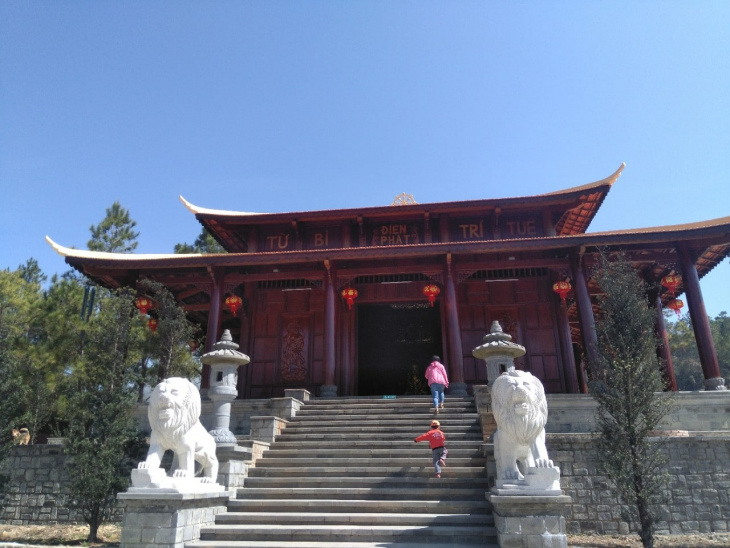
The main temple of the Truc Lam Dao Nguyen Zen Monastery. Photo:
Not too far from Gia Nghia City, Truc Lam Dao Nguyen (Trúc Lâm Ðạo Nguyên) Zen Monastery is a place where religion and nature collide. On the grounds, visitors can tour large temples and marvel at the traditional architecture. Open daily, the monastery allows anyone to visit who is interested in learning more about Vietnam’s spirituality and natural beauty.
Special Events
Hoping to draw in more tourists and keep the Central Highland Culture alive, the Brocade Festival is one of the newest events in Dak Nong Province. Originally started in Kon Tum, visitors can view the brocade-making process, browse finished pieces, watch the Vietnam Tourism Beauty Pageant and check out “The Culture and Nature of People of Dak Nong” content photos.
Perhaps seen as an obscure topic, the Brocade Festival draws thousands of international visitors from neighboring countries to Dak Nong Province. Showcasing their brocade artwork, these vendors also learn new techniques from the Vietnamese locals. Other celebrations that occur during the festival are gong, singing, and dancing performances.
Weather
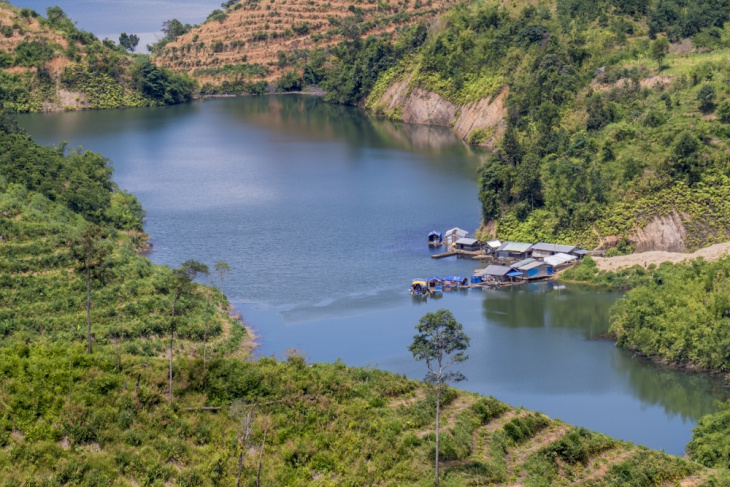
Boathouses on Ta Dung Lake. Photo: Bé Râu
Tourism in Dak Nong is largely dependent on the weather. Just like the rest of Vietnam, there is a wet and dry season, however, tourism in Dak Nong doesn’t favor one over the other. From November to April, Dak Nong’s climate is cooler and drier. With less rainfall, tourists can enjoy outdoor activities like hiking and camping.
Moreover, various holidays celebrating the end and beginning of the year make the dry season is the best time to participate in the local festivals. However, with less rainfall, some of the waterfalls will be significantly smaller or completely dry.
For tourists who want to see the waterfalls at their peak, planning a trip during the rainy season, which can start as early as May and last until October, is essential. During these months, the temperatures will be higher and there will be daily rain showers. While the rain can make hiking and camping difficult, many tourists will brave the weather to see the waterfalls fully flowing.
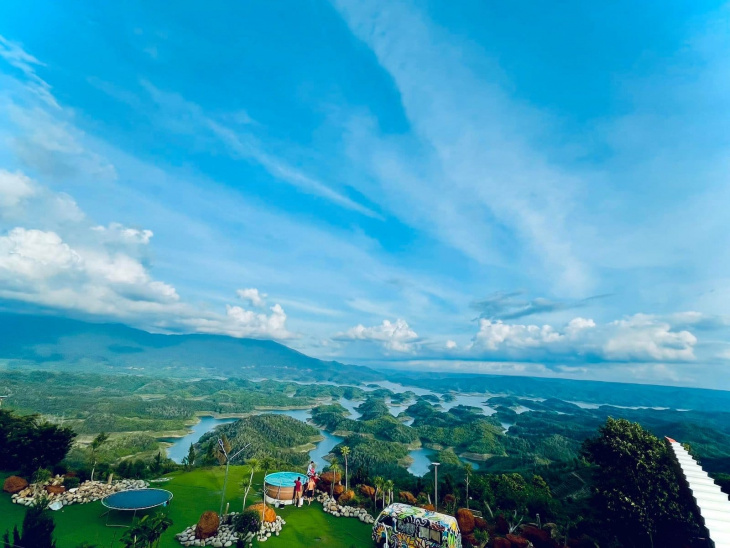
View from Ta Dung Topview Homestay. Photo: Ta dung Topview Homestay
Acting like a southern gateway to the Central Highlands Region, Dak Nong Province is an ecotourist’s dream destination. Free from the crowds and noise of the country’s mega holiday hotspots, tourists can explore Vietnam’s lesser-known side where quiet landscapes lead to marvelous waterfalls, dense forests, and hidden caves.
Though current tourism is limited, the steady stream of visitors means that Dak Nong Province has the potential to become a major destination in the Central Highlands.
Activities near Dak Nong Province
National Parks:
Rivers:
Towns:
Waterfalls:
Latest in Dak Nong Province

Trio of Waterfalls in the Central Highlands
The rugged terrain of Southern Vietnam’s Central Highlands guarantees two things: breathtaking natural beauty and falling…
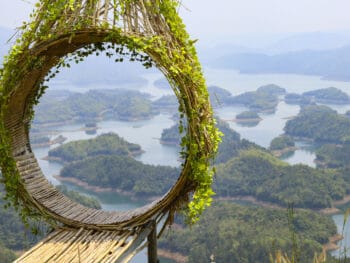
Ta Dung National Park – Dak Nong Province
To some, Tà Dùng National Park is considered the “Ha Long Bay of South Central Vietnam”.…
View more Dak Nong Province articles
Đăng bởi: Cuộc Sống Quá


